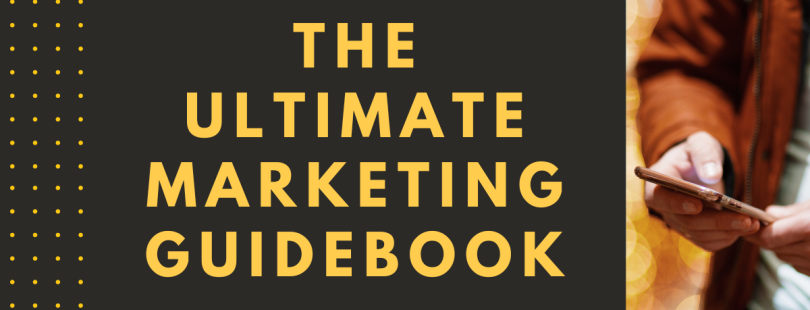This handbook is designed to provide you with the tools and knowledge you need to effectively market your business in the digital space.
From social media marketing to email campaigns, this guide will cover a wide range of digital marketing tools. Whether you’re a small business owner or a marketing professional, this is an essential resource for anyone looking to improve their digital marketing toolkit. So let’s get started!
Email Marketing Tools
Email marketing can be a powerful tool for businesses looking to reach and engage their customers and prospects. There are many different email marketing tools available, each with its own unique set of features and capabilities. Here are 10 email marketing tools that can help you get started with your email marketing efforts:
Mailchimp: Mailchimp is a popular and user-friendly email marketing tool that offers a range of features, including email templates, automation, segmentation, and analytics.
Constant Contact: Constant Contact is another well-known email marketing tool that offers a range of features, including customizable templates, automation, and integrations with social media and other marketing tools.
AWeber: AWeber is a comprehensive email marketing tool that offers a range of features, including email templates, automation, and integrations with popular e-commerce platforms.
GetResponse: GetResponse is a feature-rich email marketing tool that offers a range of features, including automation, A/B testing, and integrations with social media and other marketing tools.
Campaign Monitor: Campaign Monitor is a powerful email marketing tool that offers a range of features, including email templates, automation, and analytics.
ActiveCampaign: ActiveCampaign is an all-in-one marketing platform that includes email marketing capabilities, as well as features for CRM, automation, and analytics.
Drip: Drip is an email marketing tool that focuses on automation and personalization. It offers a range of features, including email templates, integrations with e-commerce platforms, and behavioral targeting.
ConvertKit: ConvertKit is an email marketing tool specifically designed for bloggers and content creators. It offers a range of features, including automation, opt-in forms, and integrations with popular blogging platforms.
Klaviyo: Klaviyo is an advanced email marketing tool that offers a range of features, including automation, integrations with e-commerce platforms, and advanced segmentation.
Omnisend: Omnisend is an email marketing tool that offers a range of features, including email templates, automation, and integrations with e-commerce platforms. It also includes SMS and social media marketing capabilities.
Ultimately, the right email marketing tool for your business will depend on your specific needs and goals. It’s important to carefully consider the features and capabilities of each tool before making a decision.
Graphic Design Tools
Graphic design is an important aspect of any business, as it helps to communicate your brand and message to your audience. There are many different graphic design tools available, each with their own unique set of features and capabilities. Here are 10 graphic design tools that can help you get started with your design efforts:
Adobe Creative Cloud: Adobe Creative Cloud is a comprehensive suite of graphic design tools that includes popular programs such as Photoshop, Illustrator, and InDesign.
Canva: Canva is a user-friendly graphic design tool that offers a range of templates and design elements for creating everything from social media posts to presentations and more.
Gravit Designer: Gravit Designer is a powerful vector graphic design tool that offers a range of features, including vector drawing, text, and effects.
Inkscape: Inkscape is a free and open-source vector graphic design tool that offers a range of features, including drawing, text, and effects.
Sketch: Sketch is a popular graphic design tool specifically designed for creating user interfaces and digital products.
Affinity Designer: Affinity Designer is a powerful vector graphic design tool that offers a range of features, including drawing, text, and effects.
GIMP: GIMP is a free and open-source raster graphic design tool that offers a range of features, including image editing, text, and effects.
CorelDRAW: CorelDRAW is a comprehensive graphic design tool that offers a range of features, including vector drawing, text, and effects.
Krita: Krita is a free and open-source raster graphic design tool that is specifically designed for digital painting and drawing.
Procreate: Procreate is a powerful raster graphic design tool specifically designed for creating digital art on tablets.
Copywriting Tools
Quality copywriting is at the core of any successful marketing campaign, as it helps to communicate your message to your audience in a clear and compelling way. There are many different tools available that can help with the copywriting process, each with its own unique set of features and capabilities. Here are 10 tools for copywriting that can help you get started:
Grammarly: Grammarly is a popular tool that helps to improve grammar, spelling, and punctuation in your writing. It offers a range of features, including grammar checking, style suggestions, and a plagiarism checker.
Hemingway Editor: The Hemingway Editor is a tool that helps to improve the readability and clarity of your writing. It offers a range of features, including a readability score, grammar checking, and suggestions for improving your writing.
Thesaurus.com: Thesaurus.com is a tool that helps to find synonyms for words in your writing, which can be helpful for avoiding repetition and finding just the right word for your message.
CoSchedule Headline Analyzer: The CoSchedule Headline Analyzer is a tool that helps to optimize the headlines in your writing for maximum impact and engagement.
Power Thesaurus: Power Thesaurus is a tool that offers a range of features, including synonym suggestions, word definitions, and word associations, which can be helpful for finding the right words for your message.
Readable.io: Readable.io is a tool that helps to improve the readability and clarity of your writing. It offers a range of features, including readability scores, grammar checking, and suggestions for improving your writing.
Hemingway App: The Hemingway App is a tool that helps to improve the readability and clarity of your writing. It offers a range of features, including a readability score, grammar checking, and suggestions for improving your writing.
Pro Writing Aid: Pro Writing Aid is a comprehensive tool that helps to improve grammar, style, and readability in your writing. It offers a range of features, including grammar checking, style suggestions, and a plagiarism checker.
The Write Life: The Write Life is a tool that offers a range of resources and tips for improving your writing, including a blog with writing prompts and exercises, a writing tool directory, and a list of writing contests.
Scribe: Scribe is a tool that helps to optimize your writing for search engines, which can be helpful for increasing the visibility and reach of your content. It offers a range of features, including keyword research and analysis, content optimization, and SEO tracking.
Customer Success Tools
As a business owner, it is important to prioritize customer success in order to retain your current customer base and attract new ones. One way to ensure customer success is to have the right tools in place to support their needs and address any issues that may arise. Here are some essential tools that can help you achieve customer success in your business:
Customer Relationship Management (CRM) software: A CRM system allows you to track and manage interactions with your customers, including sales, support, and marketing activities. This can help you understand your customers better and provide personalized support.
Help desk software: Help desk software allows you to manage and track customer support inquiries, as well as prioritize and assign them to the appropriate team members. This can help you resolve customer issues efficiently and improve overall satisfaction.
Live chat software: Live chat software enables you to communicate with customers in real time, providing quick and convenient support. This can help improve the customer experience and increase customer satisfaction.
Knowledge management software: A knowledge management system allows you to store and organize information and resources related to your business, including customer support materials and frequently asked questions. This can help your team provide more efficient and accurate support to customers.
Marketing automation software: Marketing automation software can help you automate and streamline marketing tasks, such as email campaigns and social media management. This can free up time and resources, allowing you to focus on providing excellent customer support.
Ad Management Tools
Ad campaigns can be an effective way to reach a wider audience and promote your business. However, running successful ad campaigns requires a range of tools to help you plan, execute, and track your efforts. Here are 10 essential tools that can help you run successful ad campaigns:
Marketing automation software: Marketing automation software can help you streamline and automate tasks related to your ad campaigns, such as creating and scheduling social media posts or sending email campaigns.
Project management software: Project management software can help you keep track of tasks and deadlines related to your ad campaigns, ensuring that everything stays on track.
Graphic design software: Graphic design software can help you create visually appealing and effective ad graphics, such as banners or social media posts.
Content creation tools: Content creation tools, such as video editing software or a simple screen recording tool, can help you create engaging and informative content for your ad campaigns.
Social media management tools: Social media management tools can help you schedule and publish social media posts, as well as track and analyze the performance of your ad campaigns on different platforms.
Email marketing software: Email marketing software can help you create and send targeted email campaigns to promote your business and drive traffic to your website.
Analytics tools: Analytics tools, such as Google Analytics, can help you track and analyze the performance of your ad campaigns, providing valuable insights into what is working and what needs to be improved.
A/B testing tools: A/B testing tools can help you compare the performance of different versions of your ad campaigns, allowing you to identify the most effective approach.
Landing page builder: A landing page builder can help you create targeted landing pages for your ad campaigns, increasing the chances of conversion.
Customer relationship management (CRM) software: CRM software can help you track and manage interactions with potential and existing customers, including ad campaigns, sales, and support activities.
In conclusion, having the right tools at your disposal can make all the difference in the success of your marketing efforts. The 50 marketing tools outlined in this blog post can help you effectively reach and engage your target audience, track your performance, and drive growth for your business.
Read More














